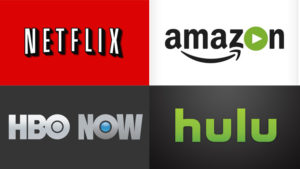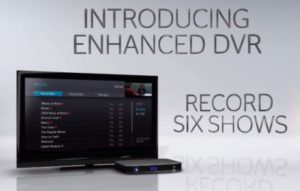Think for fifteen seconds and try to remember the last commercial you’ve seen on a television set. Can you remember it? No? Why is that? The reality is, most consumers are connected to their mobile devices a good portion of the day for business or personal entertainment purposes (Watson et al., 2013). Knowing this, can it be said that the advancement of mobile technology as a primary form of communication, glued to our hands, ears, or wrists, has negated traditional advertising’s ability to entice consumers to purchase a product or service?
Consider television. The ability to control what we are watching on services such as Hulu and Netflix WITHOUT commercial interruption on premium subscriptions is a popular choice for consumers leading busy lives where traditional programming hours are not convenient.
No commercials mean zero advertising. For those using streaming services instead of watching television have reduced their exposure to advertisements significantly, except of course for product placements in some of our favorite streamed shows…cue in House of Cards on Netflix, a scene where a government official slides his finger on an obvious Samsung tablet, transferring a map wirelessly onto the clearly visible Samsung television…the magic of sneaky advertising! (Check this scene out HERE)
Aside from that, traditional television marketing would otherwise stay nowhere to be found in streaming services.
Another aspect of television people forget is DVR devices. These allow consumers to record television to watch at a later time. The problem with these devices, for advertisers at least, is that end-users have the ability to ignore commercials by skipping them…this is in addition to the fact that ratings are not always accurate for programming since reporting is incomplete due to DVR devices…causing programs to be canceled prematurely…remember Arrested Development?
Consider radio. You might say advertisements remain the same, and yes they do, but do you recall the premium radio service called SiriusXM, offering music with no advertisement interruptions? Couple SiriusXM with Apple Music’s streaming radio service and that leaves consumers with several options to listen to music any time of day without a single advertisement. Think to yourself, when was the last time you heard a radio advertisement?
Over 50% of average American consumer use their smartphone at least occasionally to follow breaking news events, share pictures, or learn about community activities (A. Smith, 2015). Essentially, people are often on their smartphones, not including other mobile devices like laptops and tablets, which leaves advertisers with the challenge of engaging consumers in these formats instead of traditional media.
While watching live television, what is the FIRST thing you do when a commercial comes on? Do you grab your phone and ignore the commercial? Distractions from mobile devices are ensuring that the dynamics of advertising are changing, but does this fact indicate a trend in traditional advertising methods becoming obsolete and mobile advertisements becoming the primary form of advertising? Is this necessarily a bad thing?
Firms are now having to fight for marketing real estate in several platforms in order to achieve the greatest amount of exposure. Creativity in advertising must be used in order to grab the attention of consumers that are now more distracted and busier than ever.
References:
Watson, C., McCarthy, J., & Rowley, J. (2013). Consumer attitudes towards mobile marketing in the smart phone era. International Journal of Information Management, 33(5), 840. doi:10.1016/j.ijinfomgt.2013.06.004 0
Smith, A. (2015). U.S Smartphone Use in 2015, Pew Research Center, Retrieved from http://www.pewinternet.org/2015/04/01/us-smartphone-use-in-2015/



8 Responses to Is Technology Making Traditional Advertising Obsolete?